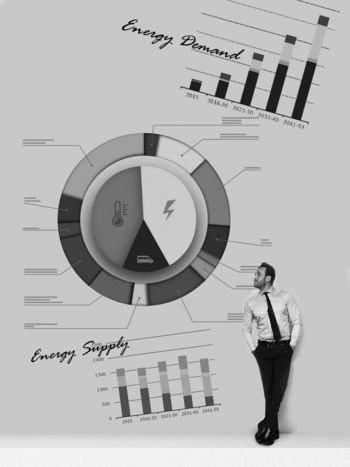Power Transformer Audible Sound Requirements
The brochure covers all aspects of audible sound relevant for new power transformer purchases > 3 MVA to be considered in the process from specification until installation. Strict distinction is made between the individual sound level components ‘no-load sound level’, ‘load sound level’ and ‘cooling system sound level’ but the combination of the components is also explained. Key results are provided in easy-to-use graphs. The brochure is also intended to serve as educational document for transformer acoustics.
Members
Convenor (DE)
Christoph PLOETNER
Secretary (PT)
Emanuel ALMEIDA
Ali AL-ABADI (DE), Heribert BRUNE (DE), Frank CORNELIUS (DE), Janine DICKINSON (GB), Jan DONCUK (CZ), Gao FEI (CN), Max GILLET (FR), Werner GOETTE (DE), Shingo KANO (JP), Kim JUHYUN (KR), Gabor NADOR (HU), Kyu-ho LEE (KR), Bart SIMONS (NL), Miha PIRNAT (SI), Frank TRAUTMANN (DE), Peter TARMAN (SI), Kohei YAMAGUCHI (JP), Mark WARREN (CA), Jiwoo YOO (KR), Jae-cheol YANG (KR), Selim YUREKTEN (TR), Han YU (CN)
Corresponding Members
Mohinder PANNU (AU), Yuriy ODARENKO (AU)
Introduction
Environmental requirements have steadily increased across society in recent years. In terms of power transformers and reactors, one environmental concern that stands out from others is the audible sound generated and emitted into the surroundings, affecting residents living nearby as well as substation staff. Permissible sound pressure levels for substation and residence boundaries are given by lawful authorities and are set so as to avoid negative effects for people. Today’s sound level specifications reveal on average more stringent requirements than in the past.
As power transformers (and reactors) are usually the most significant sound sources in a substation, it is necessary to consider their acoustic characteristics with care, particularly for new purchases. This however is often challenging because validated information for transformer sound level specification is almost not available. As a result, transformer sound level specifications are found to be repeatedly technically unreasonable.
Looking to the ways utilities handle sound level aspects when purchasing transformers, it can be observed that their practice for sound level specification is not at all harmonized but often influenced by vague factors instead of physical facts. It was therefore an urgent need to develop figures and guidelines for a technically realistic transformer sound power level specification that can be used easily by utilities for the technical transformer procurement process but also serve for vendors as rough information while quoting.
CIGRE WG A2.54 has started its work in March 2016. It is the first CIGRE body dealing with a subject related to transformer sound after more than two decades. The last two CIGRE publications date from 1992 and 1996. Ever since, a lot of work has been done in the field of transformer acoustics related to sound control by design (manufacturers), sound level measurement (IEC, IEEE) and external sound mitigation (utilities, manufacturers); however, no activities on sound level specification have taken place.
Content of Brochure
WG A2.54 split up the given task into the following areas:
- Basic acoustics and sound development in transformers
- Derivation of typical sound power levels of transformers
- Sound level specification and legislation
- Sound mitigation
Results presented in the technical brochure reflect this structure with following chapters:
Chapter 1 – Introduction – Scope, Range of application, Clarification of basic acoustic terms, Remarks.
Chapter 2 – Background – Physics of sound, Sound development in power transformers, Transformer sound level control.
Chapter 3 – Sound levels of liquid-immersed transformers – Concepts and boundaries for the derivation of typical sound level ranges, Typical ranges of no-load sound power level, Typical ranges of load sound power level, Typical ranges of cooling system sound power level, Combination of sound levels, Sound power levels of transformers for 50 Hz vs 60 Hz power frequency, Sound power levels of single-phase units forming transformer banks.
Chapter 4 – Sound levels of other transformer types – Dry-type transformers, Gas-insulated transformers, Transformers with cores made from amorphous steel.
Chapter 5 – Sound level specification and legislation – Survey / questionnaire, Noise and substation design, Impact of sound level specification on costs, losses, transportation, Parameters for specification purposes, Achievable sound power levels for specification purposes (case studies), Sound Levels and Transformer purchasing, Tender process, On-site noise measurements after transformer installation.
Chapter 6 – Sound mitigation techniques – Overview, In-tank solutions, Cooling system solutions, Design of sound barriers, Factory-installed sound barrier solutions, Site-installed sound barrier solutions, Sound mitigation technologies not in regular use.



